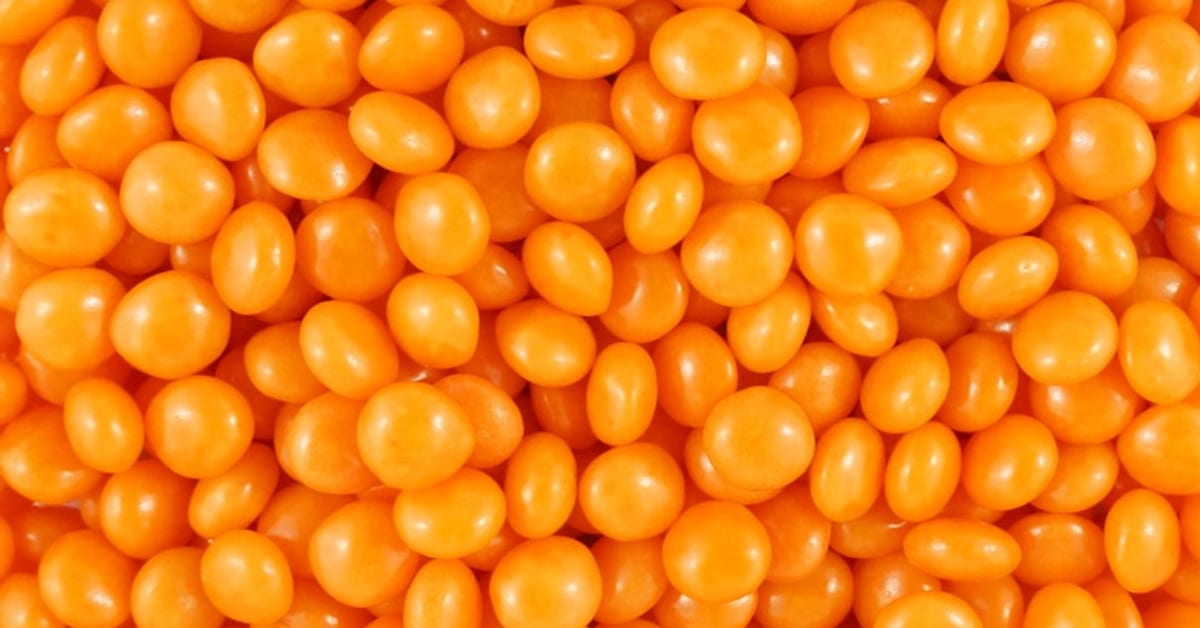Orange Candy – Exploring the World Of Sweet Citrus
Orange is one of the brightest and most autumnal hues. The most common associations with this bright tone are warmth and vigor. Whether it’s hard candies, gummies, or chocolate, there is no shortage of orange candy varieties in the candy industry to satisfy your sweet tooth. Orange candy usually features a delicious combination of flavors. But also, the color itself is eye-catching and appealing, drawing people in with its bright and sunny appearance.
If you want to know more about orange candy varieties, let’s dive into this sweet overview of delicacies.
Please leave a review or any memories of this snack in the comments at the bottom of this page. Thank you!
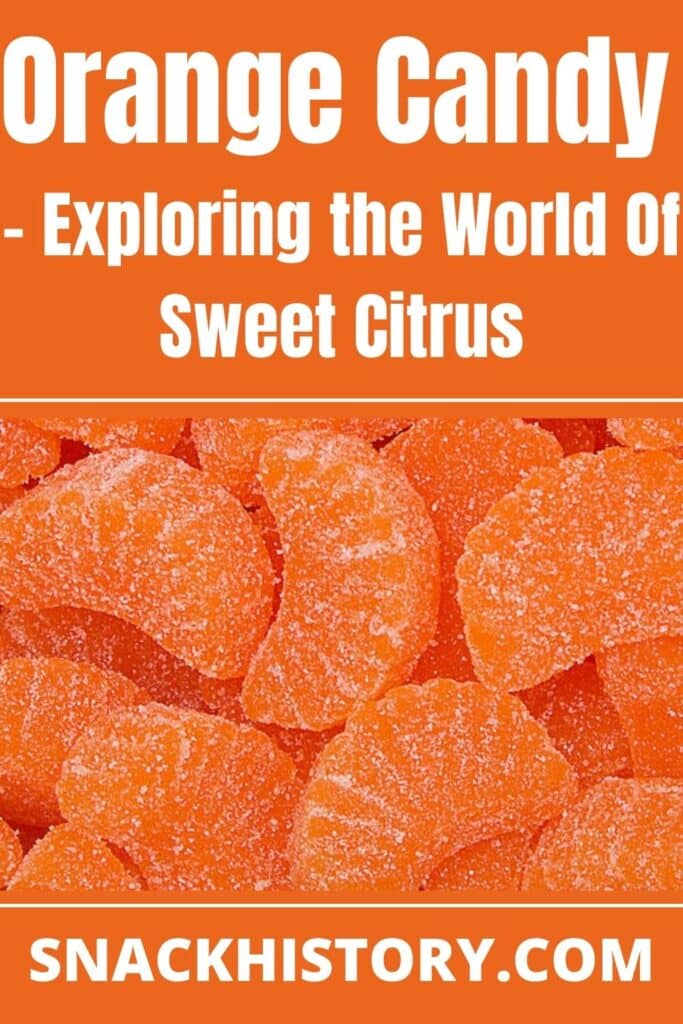
7 Most Popular Orange Candy All Over the World
1. Circus Peanuts
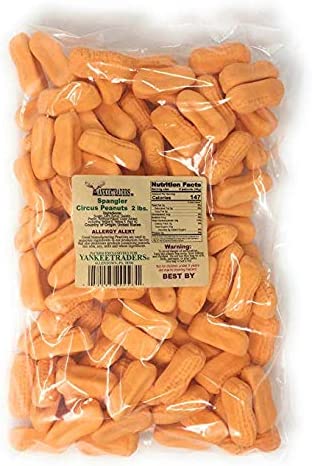
Circus Peanuts is a beloved American marshmallow-like dessert in the form of a peanut. Throughout the 19th century, a variety of unwrapped “penny candy” was sold at retail venues, including five-and-dime stores. This orange candy has been made in northwest Ohio since the 1930s by Spangler Candy, the confectioner famous for Dum-Dums.
The orange variant of Circus Peanuts candy is indeed the most popular variety for its synthetic banana flavor. Its ingredients typically include corn syrup, sugar, gelatin, pectin, soy protein, artificial flavors, and food coloring.
Up until the 1940s, candy was only accessible in the spring. But, with the invention of polyethylene film, it became year-round marketable and consumable. Over the years, confectioners have marketed them in a range of tastes and hues. The three biggest producers of Circus Peanuts, even though the products are practically similar, are Melster Candies, Spangler Candy Company, and Brach’s.
2. Candy Corn
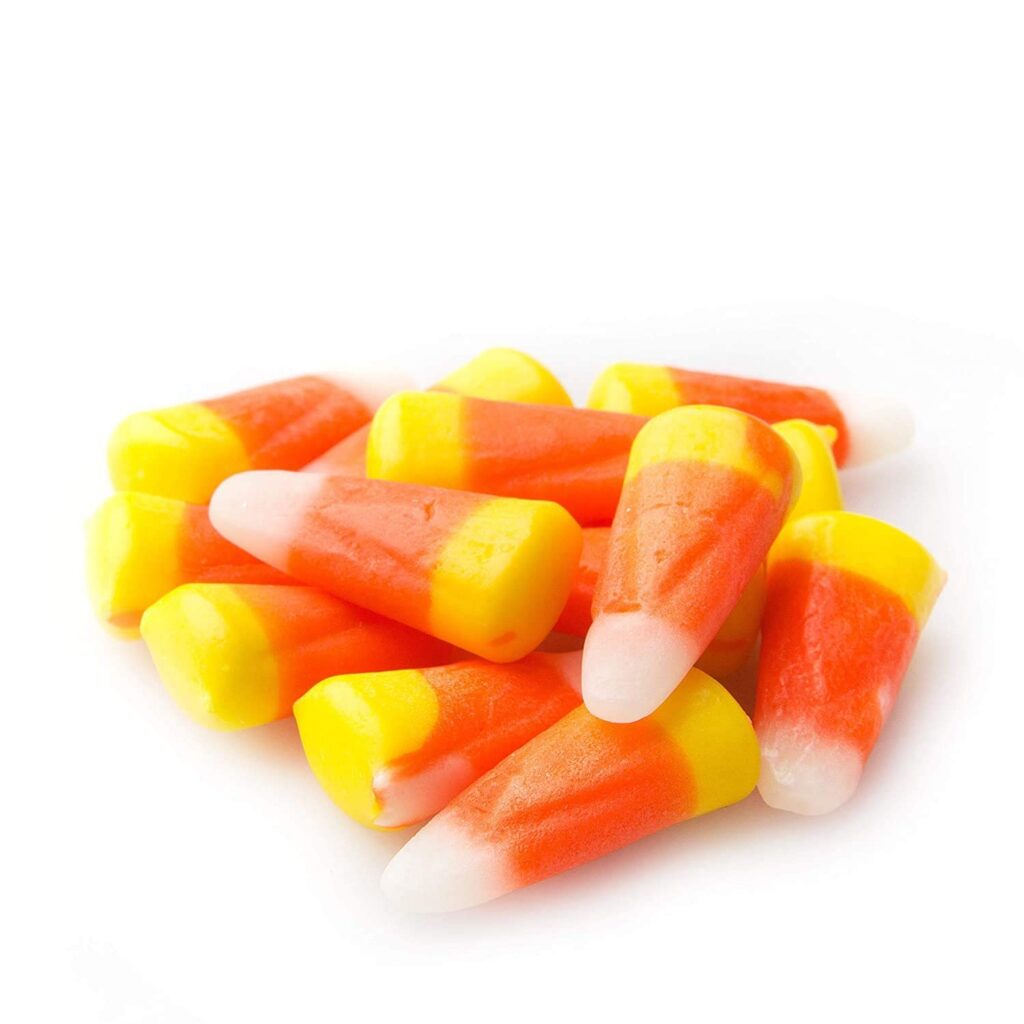
Did you know that the popular orange candy Candy Corn was known as “Chicken feed” initially? While most people nowadays don’t keep their own chickens, in the past, this would have been a fairly apt comparison to make given the design and shape of this sweet. The initial product was made available for purchase in the 1880s, and promotions relied entirely on the relationship between chicken feed and marketing.
The product was created by Wunderle Candy Company after an employee came up with the concept. George Renninger’s invention, which is still well-liked today, doesn’t seem to have generated any financial gain for him, unlike the history of so many other candies.
The first confectionery advertisements included a rooster crowing with the line, “Something worth crowing for.” Additionally, there were allegations that the candy was “butter sweet,” which may not mean much now, but at the time, sweets were not a typical component of the enjoyable dining experiences that the majority of people experienced.
The original Candy Corn product had nothing to do with Halloween or the changing of the seasons. It was one of the many penny candies that were widely available at this time in general stores and sold all year.
3. Cow Tales
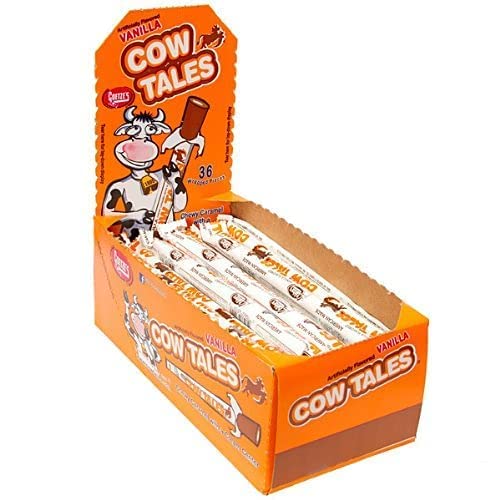
Cow Tales is another popular orange candy that was introduced on the market in 1984, but Goetze Candy Company Inc. had been producing caramel sweets before that. This business started off as a chewing gum manufacturer in 1895. When the business first started, its proprietors were William and August Goetze, and they soon decided against selling chewing gum in favor of a more lucrative offering.
The father and son partnership created the first caramel candy, which they called Chu-ees in 1917. Later on, this was developed into a product called Caramel Creams, commonly known as Bull’s Eyes. It was a caramel product with a cream filling in the middle.
One of the distinguishing characteristics of each Bull’s Eye candy was and still is the softcore cream, which gave each sweet its very distinctive flavor. The Bull’s Eye was the first candy to be introduced with this distinctive core cream layer, whereas the Cow Tales is where the soft and chewy center is front and center.
The item is offered in both the larger normal-size stick, which was created in 1984, and the smaller micro-size stick. Each of the original sticks weighs 1 oz. The product’s packaging has always been straightforward and intended to make the association with Bull’s Eyes obvious. A cartoon cow appears at the end of the product logo on the white candy boxes with orange text. Cow Tales are offered separately, wrapped in plastic that matches the flavor of the cow tale. The classic orange candy color of the packaging has a vanilla flavor.
4. Chick-O-Stick
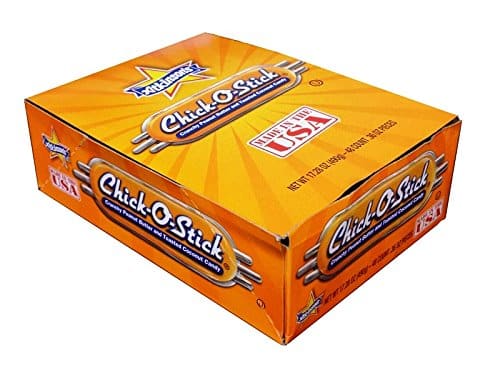
The Atkinson Candy Company continues to produce Chick-O-Stick – an orange candy that has been around since the 1950s. This confection is composed of peanut butter, granulated sugar, and toasted coconut on top. There is also a sugar-free version of this sweet available. The candy comes in a wax paper wrapper and is a brilliant orange cylinder.
The inside of Chick-O-Sticks, which come in a variety of lengths and thicknesses, is formed of peanut butter in the shape of a honeycomb. A coating of syrup and sugar mixture covers the exterior. When the candy is eaten fresh, it is crumbly and dry. The candy may become softer and chewier after being removed from its packaging.
Although it was not the primary motivation for their creation, this orange candy is vegan. Originally, chocolate candy bars would melt in the heat, so these candies were supposed to be sold then. Several candies are virtually identical to this one in design, but practically all of them are offered with a layer of chocolate on the outside rather than being completely uncoated.
5. Reese’s Peanut Butter Cups
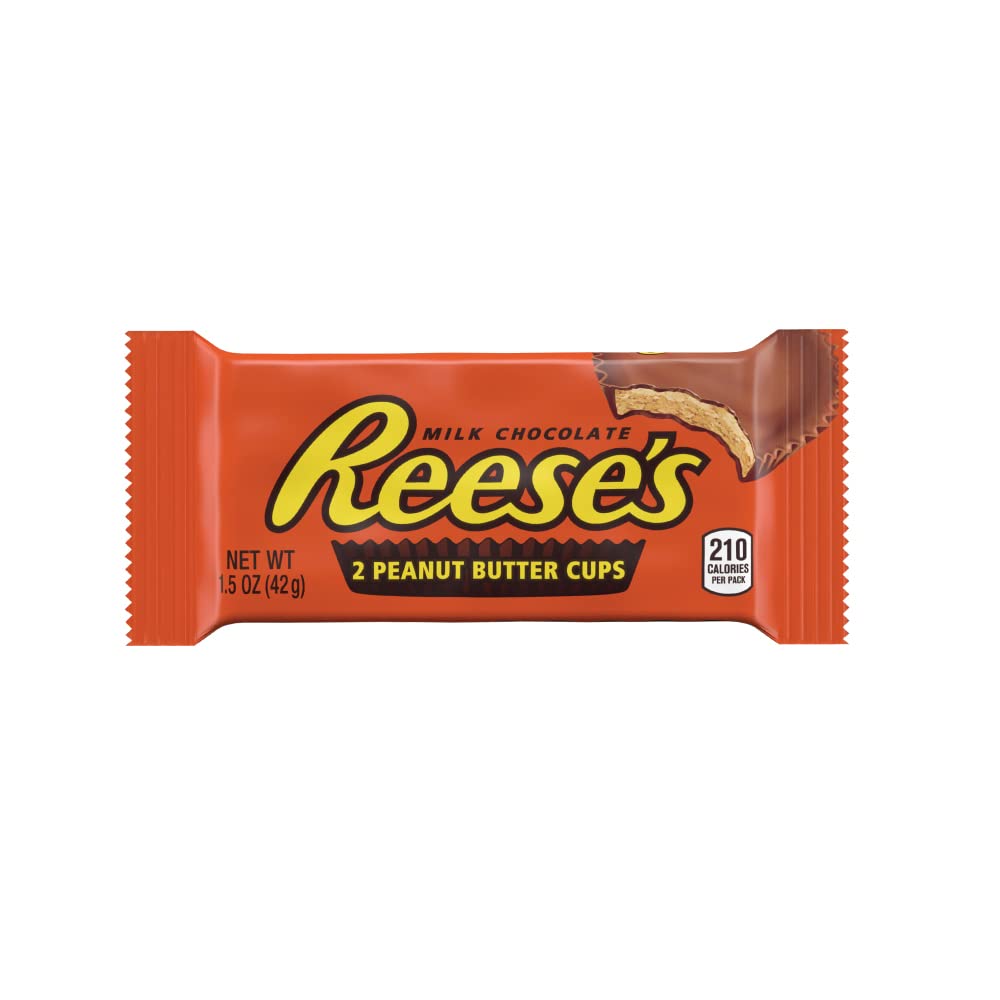
Before the release of Reese’s Peanut Butter Cups, Harry Burnett Reese spent years trying to establish a successful confectionery business. After two unsuccessful attempts, he founded Reese’s company in his basement as his third and final effort. It wasn’t until five years later that Reese’s Peanut Butter Cups were finally introduced to the world.
This orange candy was first referred to as “Peanut Butter Cups” or “Penny Cups.” When a business client complained to Reese in 1927 that he was having trouble retaining stock of chocolate-covered peanut butter candies, Reese quickly responded by releasing Reese’s Peanut Butter Cups in 1928.
The vendor asked H. B. Reese if he could offer him a product to satisfy his customer’s needs because the vendor had been purchasing chocolate-covered peanut butter candies from a source that was unable to keep up with demand. The history of Reese’s Peanut Butter Cups begins with its creator satisfying a market need on November 15, 1928, when they were first released.
H. B. Reese gave them a distinctive flavor by utilizing high-quality peanut butter and at least one secret ingredient in addition to Hershey’s chocolate as a foundational ingredient. After purchasing new roasting equipment, it was discovered that the flavor of the Peanut Butter Cups had altered.
6. Peach Salt Water Taffy
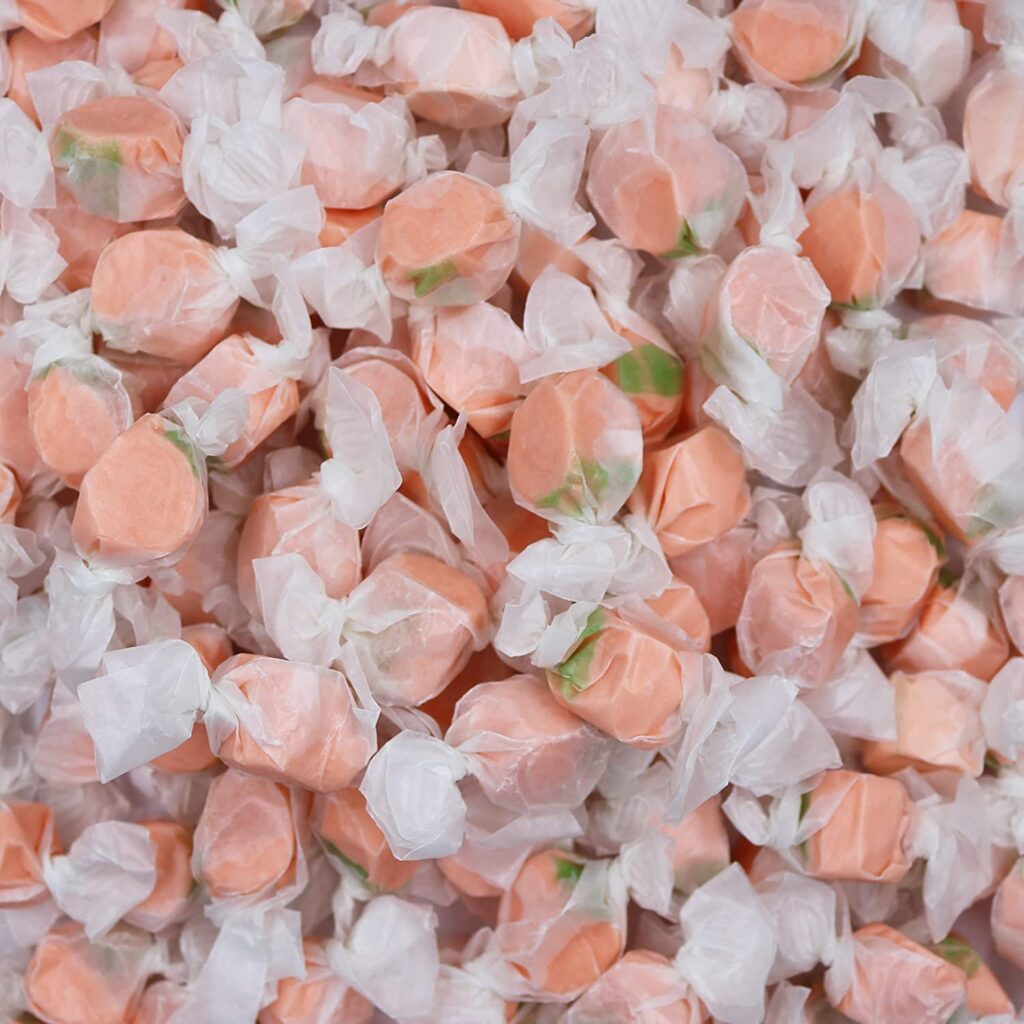
Taffy, also known as Soft Taffy, is a soft candy prepared by continuously stretching or pulling a mixture of boiling sugar and oil or butter until it develops a light, airy, and chewy feel. Taffy may be made in a variety of tastes and pastel hues by confectioners using fruit, artificial flavors, molasses, and food coloring. The Peach Salt Water Taffy has a beautiful orange color, which suits the candy’s shape and tastes perfectly.
This orange candy was created in Atlantic City, New Jersey, in the early 1900s, and much is known about it. Atlantic City was during this time a popular tourist destination where people would promenade down the boardwalk, enjoy jazz music, gamble, and more. During this period, saltwater taffy also started to establish itself as a boardwalk mainstay.
Legend has it that candy vendor David Bradley had a shop on the beachfront that was unintentionally swamped with saltwater. He asserts that he sold the candy nonetheless, giving rise to the term “saltwater taffy“. According to some stories, confectioner Joseph Fralinger made the candy famous and may have been the first to cut it into bite-sized pieces.
7. Orange Tic-tac
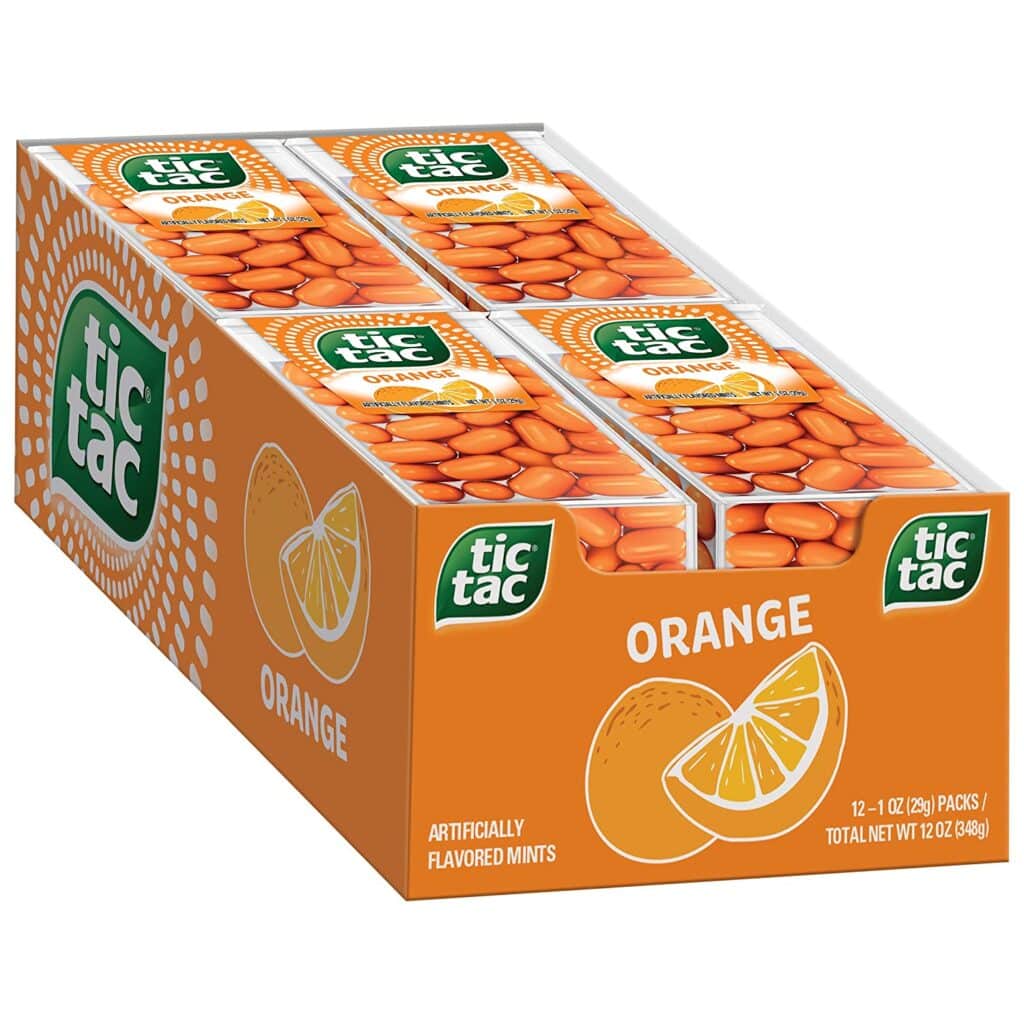
Small hard candies called Tic Tac are produced by the Italian confectionery company Ferrero. This orange candy was even sent into orbit in 1969. Small transparent boxes with a live hinge cover are used to sell Tic Tacs. They were colored when they were released to match the flavors. Modern Tic Tacs are typically white (with a few exceptions), and the boxes are colored to match the colors. Several more flavors were introduced in addition to the original fresh mint taste, such as orange in 1976. Orange Tic Tac has distinctive, vibrant orange packaging.
Initially, they were sold in the classic Tic Tac packaging, which included pellets with 1 1/2 calories apiece. The size of each Tic Tac was later doubled, and they now contain 2 calories apiece. The brand has provided holiday gift bundles for a variety of occasions, such as Christmas, Valentine’s Day, Easter, and St. Patrick’s Day. They began selling twin packs in the 1990s. There were two kinds of Tic Tacs in each of these containers.
Bottom Line
Orange candy is a beloved treat that has been enjoyed by people for generations. Orange is the color of celebration and joy and is often associated with fall, harvest, and Thanksgiving.
Vibrant colors and delicious flavors make orange candy a favorite among candy lovers all around the world, as it can evoke positive emotions in people.

Nato is a content writer and researcher with a background in psychology. She’s passionate about writing about the candy industry and exploring the cultural significance of sweets and treats. She believes that the stories behind our favorite snacks can reveal a great deal about our values.
Please leave a review or any memories of this snack in the comments below. Thank you!
Click here for a full A-Z list of Snacks and Candy
